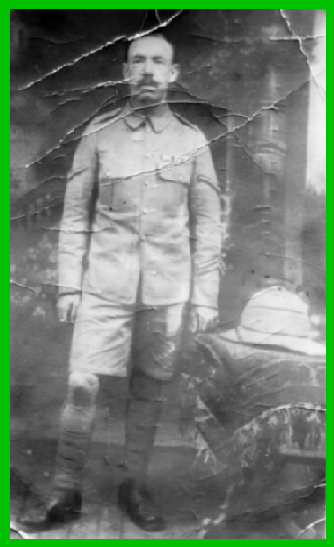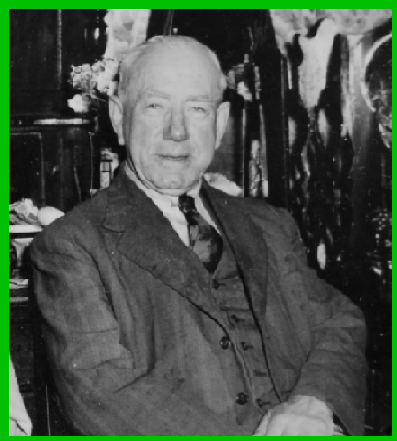



John was born in Tipperary (?) in 1885, the son of Patrick and Mary Flannery. He joined the British Army for a 10 year period on 21st July 1908 in Dublin (Brunswick Street), and served with the Connaught Rangers, 88th Foot Regiment (nicknamed “The Devil’s Own”; raised in 1793). Following his discharge, he re-enlisted for a further 4 years on 26th February 1919 and rose to the rank of lance-corporal (#9380) in 1st Battalion.
He led the mutiny of Irish soldiers in the Connaught Rangers in Jullundur, India in July 1920; although a similar claim was subsequently made by Private Joseph Hawes. The mutiny was exceptional in that all fire-arms were handed into the arsenal, and perfect discipline was maintained. During the mutiny, two flags bearing the Irish tri-colour were hoisted over the barracks in Jullundur; this incident was unique in the history of the British Army.
Death sentence was passed by court martial on 4th September 1920, but was subsequently commuted to life penal servitude. He was imprisoned in Parkhurst (Isle of Wight), Portland and Wandsworth Prisons (England) for 2 years and 4 months (#U307). He was released on 6th January 1923 as a conciliatory gesture by the British Government after the Irish War of Independence (1920 – 1922).
Some of the mutineers refused to acknowledge the court’s jurisdiction. Lance-corporal John Flannery conducted his own defence and was popularly accused of turning King’s Evidence at the time. He was consequently portrayed as a turncoat, and was vilified in the ballad by Private Joseph Walsh, as follows ...
“Now here’s to the truth and to those youths that upheld Ireland’s cause
Success attend you Sweeney, Gogarty, Lally and that gallant Josie Hawes,
Who always held Ireland’s cause at heart as we could plainly see,
For it they were betrayed in Dagshai by the informer Flannery.”
He wrote the definitive account of the mutiny under the pseudonym “One Who Knows”, published by the Sunday Independent newspaper in a series of feature articles in 1925. In the articles, he asserted that the “grounding of arms” was a protest against the reported actions of the Black and Tans against civilians in Ireland.
He was subsequently very active in canvassing financial support for the survivors of the mutiny and their families, by lobbying politicians and making a case for a state-funded military pension comparable with the pension awarded to the veterans of the Irish War of Independence. Studies indicate that his actions were directly responsible for the passing of the Connaught Rangers (Pensions) Act, 1936. He was awarded a long service pension of 2 shillings and 7 pence halfpenny per day from 1st October 1934. It is interesting to note that he signed himself Seán Ó Flannghaile in a letter to the Department of Finance dated 4th January 1941.
The Department of Defence conducted a series of interviews with war veterans of the 1913 - 1921 era under the auspices of the Bureau of Military History which operated from 1947 to 1957. His unpublished witness statement (WS287, file #S1272, lodged in the National Archives) provides a very detailed blow-by-blow account of the mutiny, and may be read here.
John died in Dublin (St. James's Hospital) on 30th June 1961, and is buried in Deansgrange Cemetery. His death certificate states that he was a widower.
[his portrait is illustrated above; courtesy of his grand-nephew, Mark Flannery]